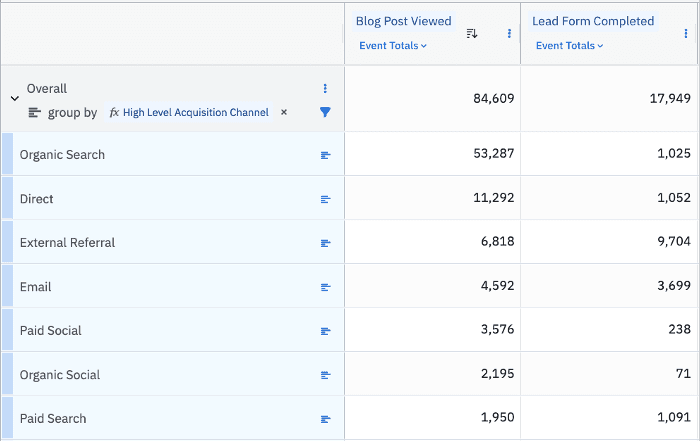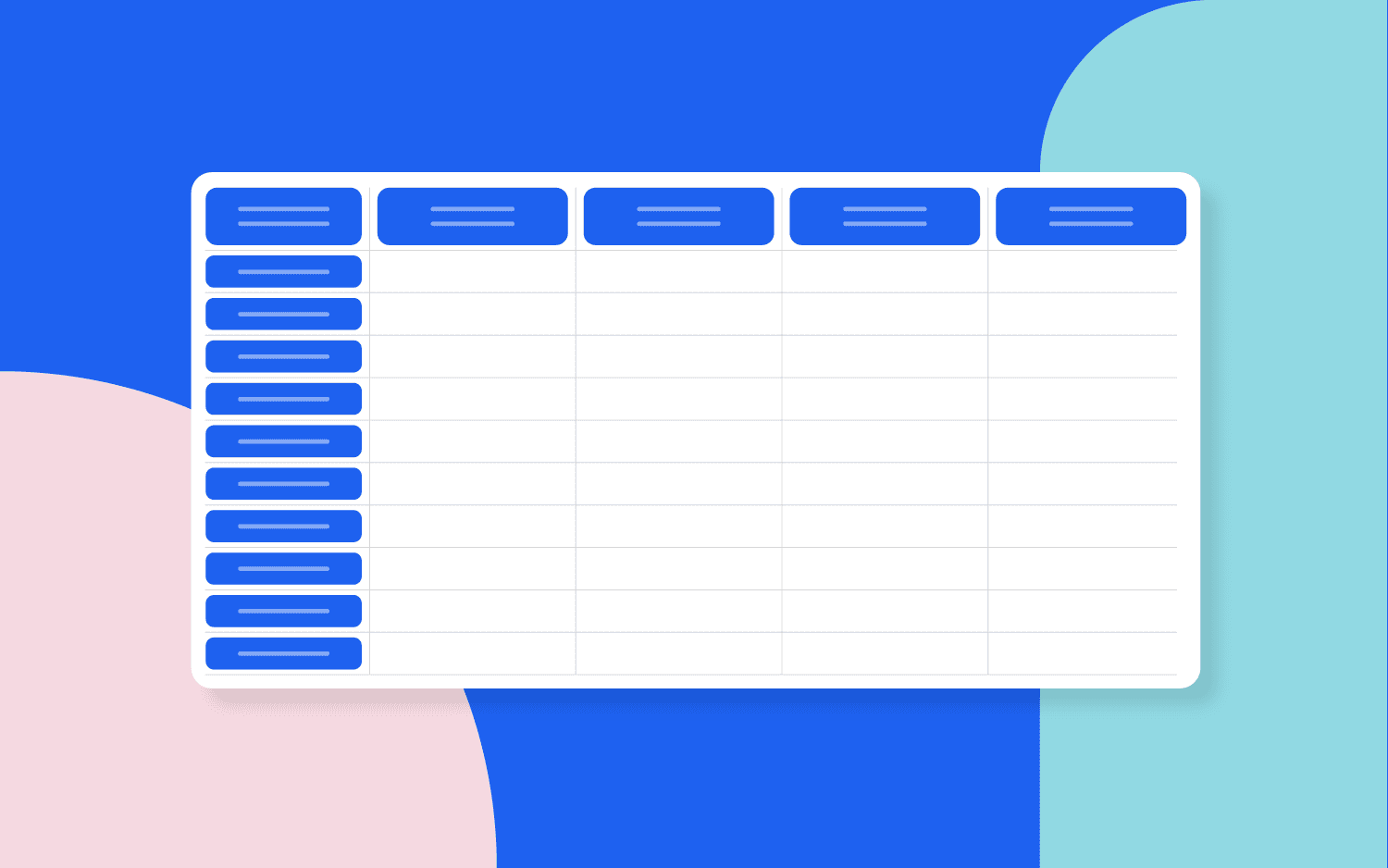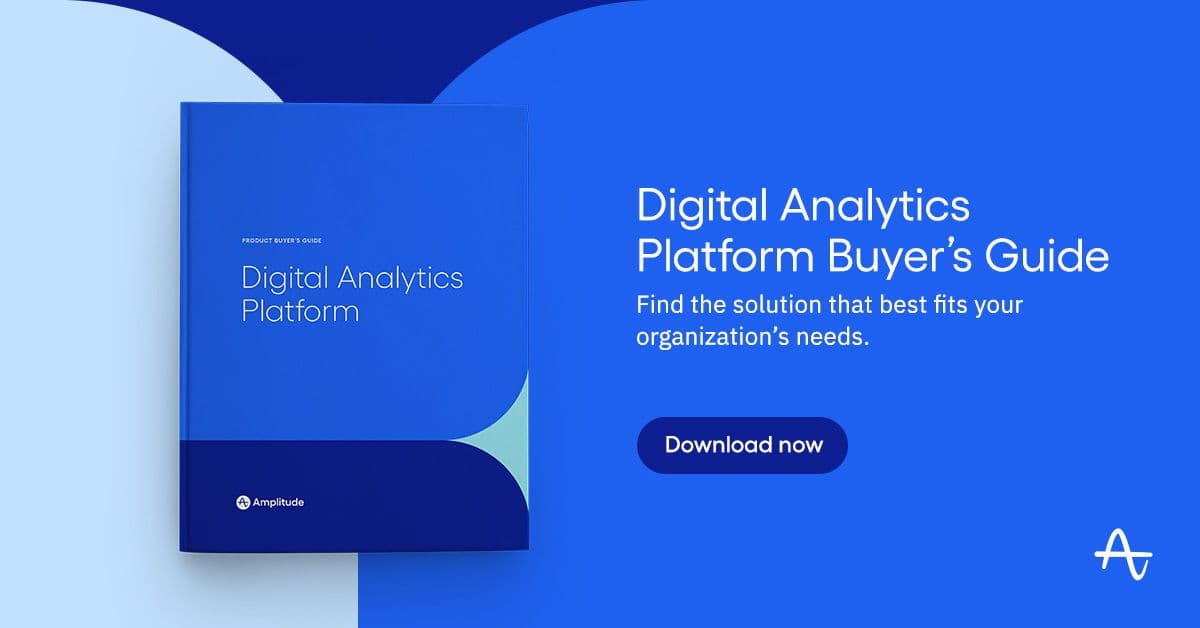Acquisition Channels in Amplitude
New Amplitude Channels feature makes viewing acquisition sources easier.
Understanding where visitors to your digital products come from is critical to marketers. Visitors can find digital products through paid search, SEO, email, etc. Sometimes referrals to digital properties are intentional (paid), and sometimes they are organic (earned). If referral traffic is intentional, it may have a digital campaign tracking code. These campaign codes are often captured and tracked by digital analytics platforms. In Amplitude, it is common to store campaign tracking codes in user properties so behavior taking place as a result of the referrer can be analyzed.
But there are many instances where organizations capture many campaign tracking codes and have many referral sources. When this happens, it is sometimes difficult to see the “forest for the trees,” as they say. Therefore, most marketing organizations group similar campaign tracking codes into higher-level acquisition channels, such as Paid Search, SEO, Social Media, etc. In Amplitude, it has always been possible to group referrers into acquisition channels using cohorts or derived properties, but these approaches were often time-consuming to build.
To make it easier to view acquisition sources as channels, Amplitude has recently added a new Channels feature. Channels is powered by a new “Classifier” administrator tool that provides a tabular, free-form approach to grouping property values to create new properties. The most obvious use case of this new “Classifier” feature is the simplification of Acquisition Channels in Amplitude. Using the “Classifier,” you can choose one or more Amplitude properties and then build rules that evaluate the property values and place campaign codes and organic referrers into higher-level acquisition channels.
Defining Channels in Amplitude
To illustrate how Channels work, let’s see how one of Amplitude’s clients has taken advantage of this new feature. Ram Bokkisa works for Eyewa, an eyewear retailer. One of the things that Ram wants to do is understand which channels are driving visitors to their digital properties. They are using advertising UTM codes for a lot of their digital advertising and have those values stored in Amplitude properties. To group all of the detailed campaign activity into marketing channels, Ram built the following Classifier:

Channels uses the Amplitude Classifier feature to evaluate the property criteria sequentially. In this example table, Channels starts by evaluating the top, leftmost property (utm_campaign). If it finds a property value that contains “shp” it will replace all those instances with a “Google Shopping” value in this new Channel Classifier property. If that condition is false, it will move to the second row. Then it will look to see if utm_source contains “tiktok” and if so, it will look to see if the utm_medium contains “cpc.” If both conditions are true, it will assign the channel to “TikTok.” This process will continue until all values are assigned to one of the channels. Note that the classifier configuration tool is only accessible to those with administrator and manager permissions in Amplitude.
When building Channels, Ram had complete autonomy to choose the names of the various channels and to select which Amplitude properties to use in the evaluation process. In addition, Channels can be updated any time new properties or values would help make it more accurate. While some other digital analytics platforms offer a way to group acquisition data, most do not allow you to make changes and have them work retroactively (most only adjust the data going forward). Any changes made in Amplitude Channels will update all historical data.
“It became much easier for us to identify the performance of different marketing channels with respect to various metrics using the Channels classifier feature“
– Ram Bokkisa, Eyewa
Another remarkable aspect of Channels is that you can create as many versions as you want. Some digital analytics platforms limit users to only one version of marketing channels, but in Amplitude, you can build a high-level version, a more detailed version, a version that groups paid vs. organic, and so on. It is up to you to choose how many different ways you want to slice and dice your acquisition data. Here is an example of multiple Channels:

Using Acquisition Channels in Amplitude
Within the Amplitude reporting interface, Channels appear as new properties that can be used like any other properties in Amplitude. Properties created by Channels can break down events, build cohorts, build user compositions, and so on. Here is an example of Channels in an event segmentation report:

Here is an example of Channels being used to build a user cohort:

Here is an example of a Data Table being used to see which Channels drove product events:

At Amplitude, we believe that it is important for marketing and product teams to collaborate. Here is an example of how Channels set by marketing can be used in retention reports, which are typically used by product teams, to see how each acquisition source impacts product retention:

We are excited to enable this new Channels feature and hope that it will make it easier for Amplitude customers to view how different acquisition channels are impacting their growth.
The new Channels feature is currently available as part of an open beta release in our growth and enterprise plans. We’ll be sharing more details about availability and packaging in the coming weeks. To learn more about Channels, check out the documentation here.

Adam Greco
Former Product Evangelist, Amplitude
Adam Greco is one of the leading voices in the digital analytics industry. Over the past 20 years, Adam has advised hundreds of organizations on analytics best practices and has authored over 300 blogs and one book related to analytics. Adam is a frequent speaker at analytics conferences and has served on the board of the Digital Analytics Association.
More from Adam





